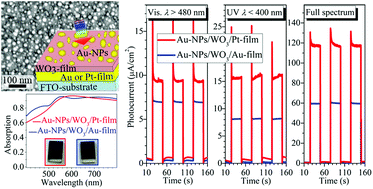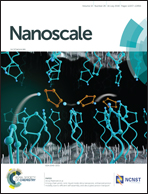UV-visible photocurrent enhancement using metal–semiconductor–metal with symmetric and asymmetric double Schottky barriers
Abstract
We experimentally report improved photocurrent performance under the illumination of both UV and visible light in the metal–semiconductor–metal nanostructures with double Schottky barriers, consisting of a monolayer of Au nanoparticles and a planar Au film separated by a thin WO3 layer. In addition to the near-unit broadband optical absorption causing the increased population of hot electrons, we demonstrate that the occurrence of the electron trapping effect at the bottom Schottky barrier is also responsible for the photocurrent enhancement under visible light illumination. Under the direct UV bandgap excitation of WO3, the electron trapping effect at the bottom barrier plays a crucial role in the anodic photocurrent enhancement. Furthermore, we demonstrate that by replacing the Au film with the metal Pt of higher work function to increase the barrier height of the bottom Schottky barrier, and hence strengthening its ability for electron trapping, the photocurrent is found to gain a further significant enhancement under the illumination of both visible and UV light.



 Please wait while we load your content...
Please wait while we load your content...